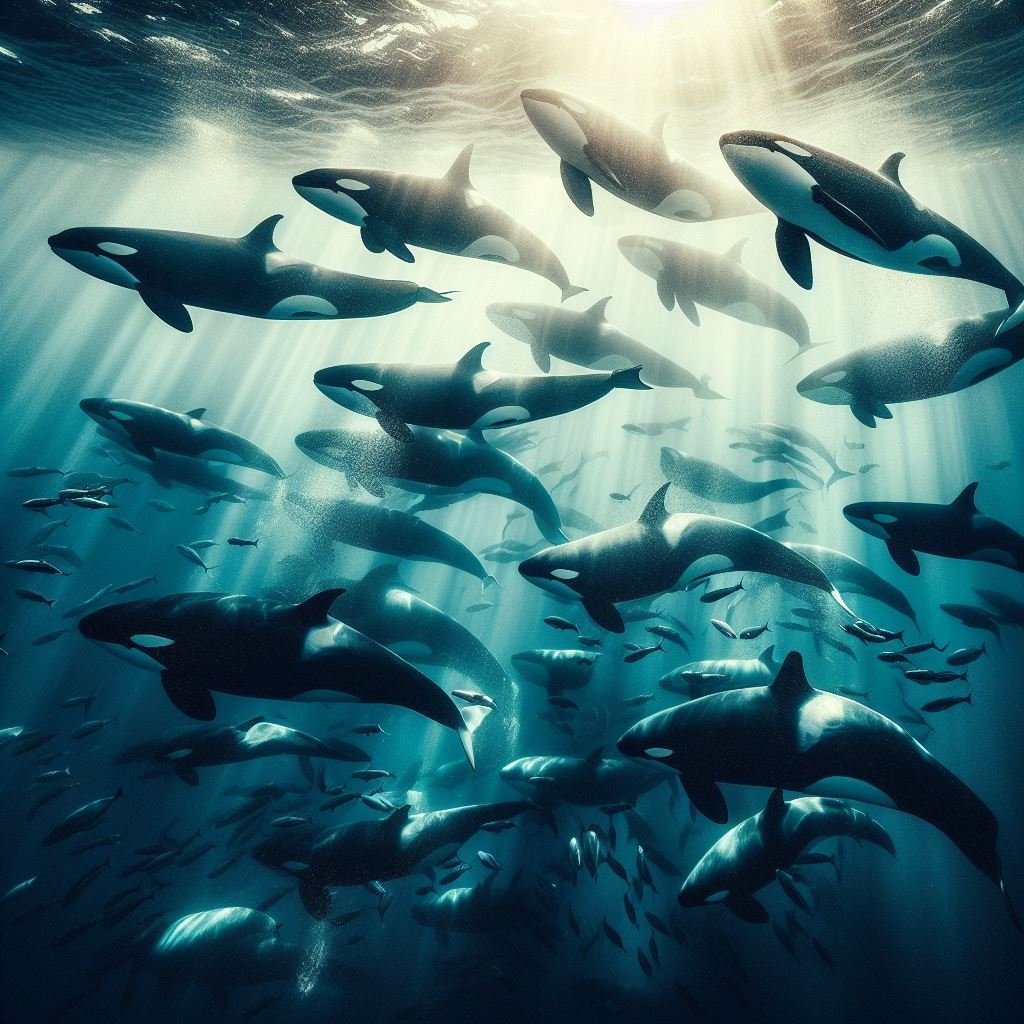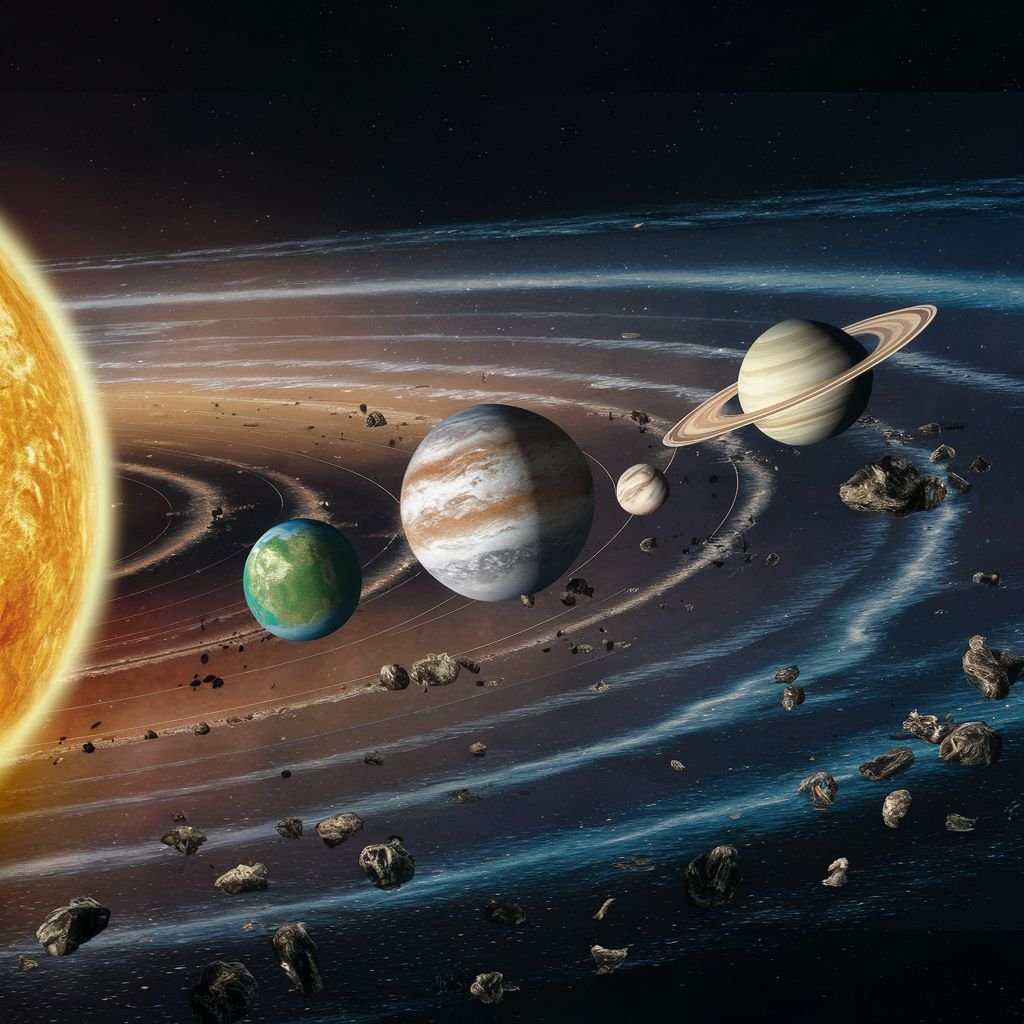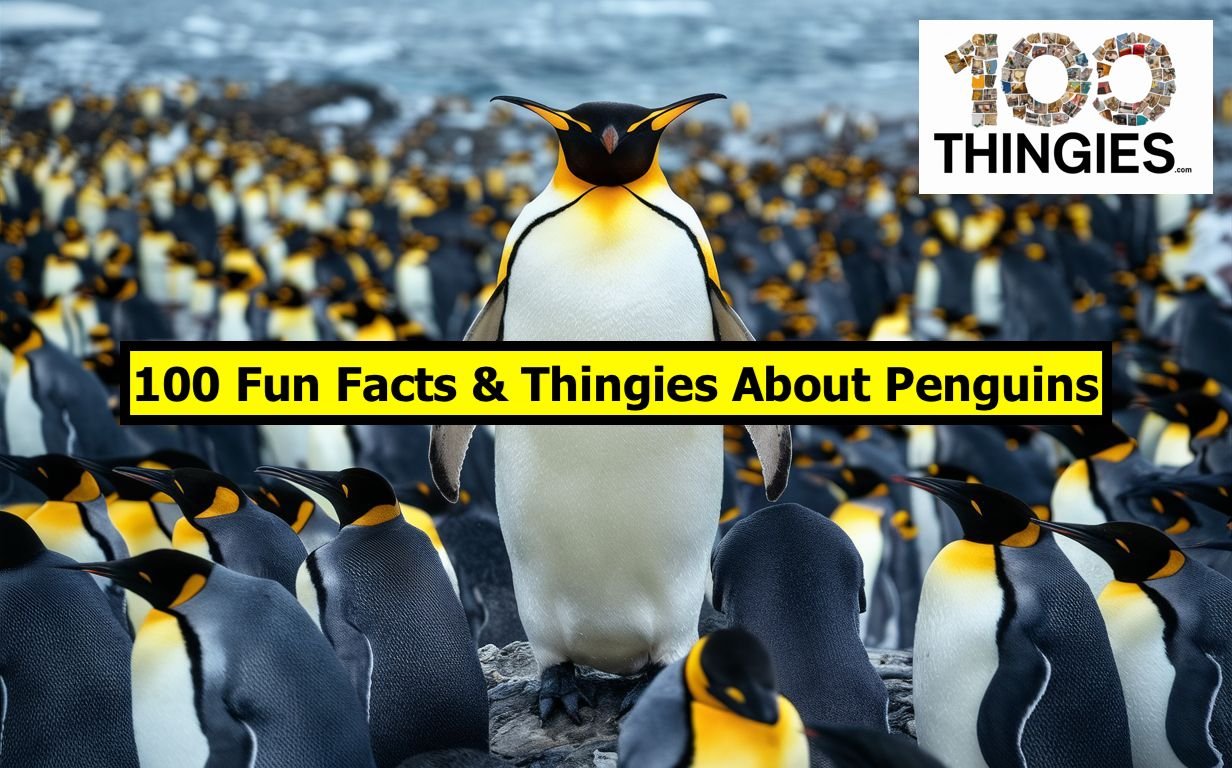Whales, these majestic giants of the ocean, captivate our imaginations and inspire awe with their intelligence, behaviors, and sheer size. Here are 100 interesting and fun facts about whales that highlight their fascinating world.
1. Whales Belong to Two Categories

Whales are divided into two main groups: baleen whales (Mysticeti), which filter feed using baleen plates, and toothed whales (Odontoceti), which hunt prey individually.
2. The Blue Whale: The Largest Animal Ever
The blue whale is not only the largest whale but also the largest animal ever to have lived on Earth, reaching lengths up to 100 feet (30 meters) and weights of approximately 200 tons.
3. Whales Are Mammals
Despite living in the ocean, whales are mammals, breathing air, giving birth to live young, and nursing their calves with milk from mammary glands.
4. The Whale’s Migratory Journeys
Some whale species undertake remarkable migrations, traveling thousands of miles between feeding grounds in colder waters and breeding grounds in warmer waters.
5. Whales Can Have Long Lifespans
The bowhead whale holds the record for the longest lifespan among whales, with some individuals believed to be over 200 years old.
6. Whale Songs Can Travel Long Distances
Whale songs, especially those of the humpback whale, can travel great distances underwater. These complex vocalizations are believed to play a role in communication and mating.
7. The Sperm Whale’s Deep Dives
Sperm whales are known for their deep dives, reaching depths of over 2,000 meters (6,560 feet) in search of squid, including the giant squid.
8. Whales’ Blowholes Are Their Nostrils
Unlike humans, whales breathe through blowholes located on the top of their heads, which are essentially their nostrils.
9. The Unique Feeding Strategy of Baleen Whales
Baleen whales feed by taking in large amounts of seawater and then filtering out small fish and plankton through their baleen plates.
10. Orcas Are Actually Dolphins
The orca, or killer whale, despite its common name, is the largest member of the dolphin family.
11. Whales Have Hair

All mammals have hair at some point in their lives, and whales are no exception. Whale calves are born with a few sparse hairs on their jaws or heads, which they lose as they mature.
12. The Narwhal’s Tusk Is a Tooth
The narwhal’s long, spiral tusk is actually an elongated upper left canine tooth, which can grow up to 10 feet (3 meters) in length.
13. Whales Play a Crucial Role in the Ecosystem
By fertilizing phytoplankton with their waste, whales help support the ocean’s food chain, which captures carbon from the atmosphere, contributing to the regulation of the Earth’s climate.
14. Whales Use Echolocation to Navigate and Hunt
Toothed whales, including dolphins and sperm whales, use echolocation, emitting sound waves that bounce off objects and return, helping them navigate and locate prey in dark or murky waters.
15. Whales Have a Global Distribution
Whales can be found in all the world’s oceans, from the Arctic and Antarctic to tropical waters, although each species has its preferred habitat.
16. The Gray Whale’s Remarkable Journey
Gray whales undertake one of the longest migrations of any mammal, traveling around 10,000-14,000 miles round-trip between their breeding grounds in the lagoons of Baja California and their feeding grounds in the Arctic.
17. Baleen Whales Have Two Blowholes
While toothed whales have a single blowhole, baleen whales have two, reflecting differences in their respiratory systems.
18. Whales Can Sleep Half-Brain
Whales sleep by shutting down one half of their brain at a time, allowing the other half to remain awake enough to breathe and to watch for threats and obstacles.
19. The Humpback Whale’s Breaching Behavior
Humpback whales are known for their spectacular breaching behavior, where they leap out of the water and land back with a massive splash, the reason for which is still debated among scientists.
20. Whales Have Complex Social Structures
Many whale species, like orcas, live in complex social groups with hierarchies, roles, and long-lasting family bonds, exhibiting behaviors that indicate high intelligence and emotional capacity.
21. Whaling History and Conservation
Whales were hunted to near extinction for their oil, meat, and baleen. International efforts and whaling bans have helped some populations recover, but many species remain endangered.
22. The Beluga Whale’s Nickname
Beluga whales are sometimes called “sea canaries” due to their wide range of vocal sounds, including clicks, whistles, and clangs, used for communication and echolocation.
23. Whale Calves Grow Rapidly
Whale calves can drink up to 600 liters of milk and gain up to 90 kilograms per day in their first year of life, depending on the species.
24. Whales’ Ancestors Walked on Land
The ancestors of modern whales walked on land about 50 million years ago. Over time, they adapted to life in the water, evolving into the marine mammals we know today.
25. The Importance of Whale Poop
Whale feces are rich in nutrients, which help stimulate the growth of phytoplankton, tiny plant-like organisms that serve as the base of the oceanic food chain and absorb carbon dioxide from the atmosphere.
26. The Cultural Significance of Whales
Whales hold significant cultural and spiritual importance for many coastal and island communities around the world, featuring prominently in their myths, legends, and traditions.
27. Whales Have Been Found in Freshwater
While most whales live in saltwater, there have been instances of whales, particularly belugas, navigating into freshwater rivers.
28. Whales Can Get Sunburned
Research has shown that whales can suffer from sunburn, with lighter-skinned species and those spending more time at the surface being more susceptible to UV damage.
29. The Minke Whale’s Stealth
Minke whales are known for their elusive nature, often avoiding boats and ships, which has earned them the nickname “stinky minkes” due to the difficulty in studying them up close.
30. Whales’ Impact on Global Cultures
Whales have inspired a multitude of artistic, literary, and musical works across various cultures, highlighting their profound impact on human creativity and imagination.
31. The Evolution of Whales’ Blowholes
The blowholes of whales evolved from nostrils located at the front of the skull in their land-dwelling ancestors, gradually moving to the top of the head to facilitate breathing at the surface.
32. Whales as Climate Change Indicators
Changes in whale distribution, behavior, and population dynamics are being studied as indicators of climate change effects on marine ecosystems.
33. The Conservation Success of the Humpback Whale
Humpback whale populations have rebounded in many areas thanks to conservation efforts, making them one of the great success stories of marine conservation.
34. Whales in Folklore and Mythology
In folklore and mythology, whales have been revered as gods, seen as omens, and featured as central characters in stories that explain the natural world and human experience.
35. The Debate Over Whale Intelligence
The intelligence of whales, particularly species like orcas and sperm whales, is a subject of fascination and debate, with studies highlighting their problem-solving abilities, social learning, and complex communication.
36. The Whale’s Role in Marine Biodiversity
By shaping the ecological dynamics of the oceans through their feeding, migratory, and social behaviors, whales play a crucial role in maintaining marine biodiversity.
37. Whales’ Contribution to Carbon Sequestration
When whales die, their massive bodies sink to the ocean floor, sequestering carbon away from the atmosphere and contributing to the reduction of atmospheric carbon dioxide levels.
38. Whale Watching as a Sustainable Industry
Whale watching has grown into a significant, sustainable industry, promoting education, conservation, and economic benefits for many coastal communities.
39. The Curious Case of Whale “Beachings”
The phenomenon of whales stranding themselves on beaches remains largely a mystery, with theories ranging from navigational errors to escaping predators or responding to illnesses within the pod.
40. Whales’ Adaptations to Deep Diving
Whales have evolved remarkable physiological adaptations for deep diving, including collapsible lungs, high myoglobin concentration in muscles for oxygen storage, and the ability to slow their heart rate to conserve oxygen.
41. The Unique Behaviors of Whale Pods
Whale pods can exhibit unique behaviors and traditions, which are passed down through generations, indicating a form of cultural transmission among these marine mammals.
42. The Southern Right Whale’s Callosities
Southern right whales have distinctive rough patches of skin called callosities on their heads, which are unique to each individual and can be used for identification.
43. Whales’ Ancient Ancestors
The earliest known ancestor of modern whales is believed to be Pakicetus, a small, hoofed mammal that lived about 50 million years ago in what is now Pakistan.
44. Whales’ Role in Indigenous Cultures
For many indigenous cultures around the world, whales have been central to spiritual beliefs, subsistence practices, and community identity, with traditions of respectful coexistence and stewardship.
45. The Mystery of Whale “Songs”
The complex “songs” of whales, especially humpback whales, continue to be a subject of scientific research, with studies suggesting they play roles in mating, communication, and navigation.
46. The Sensitivity of Whales to Sound Pollution
Whales are highly sensitive to underwater noise pollution, which can interfere with their communication, navigation, and feeding behaviors, highlighting the need for noise management in the oceans.
47. Whales’ Ecosystem Engineering Role
By stirring up the ocean waters through their movements, whales help cycle nutrients from the deep sea to the surface, supporting the growth of phytoplankton and overall productivity of marine ecosystems.
48. The Threat of Plastic Pollution to Whales
Whales are increasingly threatened by plastic pollution, with ingested plastic causing injury, starvation, and death, emphasizing the urgent need for global plastic waste reduction efforts.
49. The Cultural Phenomenon of Whale Songs
Whale songs have transcended biology to become a cultural phenomenon, inspiring music, sound art, and efforts to communicate with these ocean giants.
50. Whales’ Contribution to Scientific Discovery
Whales have contributed significantly to our understanding of evolution, marine biology, and ecology, serving as a window into the complexity and interconnectivity of life on Earth.
51. Whale Milk Is Exceptionally Rich
Whale milk is incredibly rich and fatty, up to 50% fat in some species, which helps the calf grow rapidly in the cold waters of their habitats.
52. The Arctic’s Unique Whale
The narwhal, often called the “unicorn of the sea” due to its long tusk, is unique to the Arctic waters and remains one of the most mysterious whale species.
53. Whales’ Role in Oral Tradition
Whales feature prominently in the oral traditions and storytelling of many coastal cultures, symbolizing everything from creation to transformation and wisdom.
54. The Impact of Climate Change on Whale Migration
Climate change is affecting whale migration patterns, with changes in ocean temperature and ice cover influencing the availability of their prey and breeding grounds.
55. Whale Falls Create Deep-Sea Ecosystems
When a whale dies and its body sinks to the ocean floor, it creates a complex ecosystem known as a whale fall, supporting deep-sea life for decades.
56. Beluga Whales and Their Facial Expressions
Beluga whales are known for their ability to change the shape of their bulbous forehead, or “melon,” allowing them to make facial expressions.
57. The Inuit’s Sustainable Whale Hunting Practices
The Inuit have practiced sustainable whale hunting for thousands of years, using every part of the animal and maintaining a respectful relationship with the ecosystem.
58. Whales’ Contribution to Ocean Acidification Research
Research on whales and their feeding and migratory habits contributes to our understanding of ocean acidification and its impact on marine life.
59. The Linguistic Abilities of Whales
Some whale species, like orcas, have distinct dialects within pods, suggesting complex linguistic abilities and social structures.
60. The Phenomenon of Albinism in Whales
Albino whales, though rare, have been documented across different species, including humpback and sperm whales, captivating the imagination of both scientists and the public.
61. Conservation Efforts Lead to Population Recoveries
Conservation efforts, including protected areas and hunting bans, have led to the recovery of several whale populations, showcasing the positive impact of international cooperation.
62. Whale Poop’s Role in the “Whale Pump”
The “whale pump” refers to the process by which whale poop recycles nutrients within the ocean, promoting the health of marine ecosystems from the bottom up.
63. The Global Ban on Commercial Whaling
The International Whaling Commission (IWC) implemented a global moratorium on commercial whaling in 1986, which has played a crucial role in the conservation of whale populations.
64. Whale Watching’s Economic and Educational Impact
Whale watching has become an important economic activity in many parts of the world, providing educational experiences and fostering a deeper appreciation for marine conservation.
65. The Threat of Entanglement in Fishing Gear
Entanglement in fishing gear is a significant threat to whales, leading to injuries, starvation, and death, and highlighting the need for safer fishing practices.
66. The Evolution of Whale Feeding Mechanisms
Whales have evolved diverse feeding mechanisms, from the baleen whales’ filter feeding to the toothed whales’ use of echolocation to hunt prey, showcasing the adaptability of these marine mammals.
67. Orcas’ Apex Predator Status
Orcas, or killer whales, are apex predators, meaning they have no natural predators. Their diverse diet includes fish, seals, and even other whales.
68. The Cultural Impact of “Moby-Dick”
Herman Melville’s “Moby-Dick” has had a profound cultural impact, exploring themes of obsession, the unknown, and man’s relationship with nature, with the white whale becoming an iconic literary figure.
69. The Use of Whale Products in History
Historically, whale products were used for a variety of purposes, including oil for lamps, baleen for corsets, and ambergris for perfumes, driving commercial whaling.
70. Technological Advances in Whale Research
Technological advances, including drones, satellite tagging, and acoustic monitoring, have revolutionized whale research, providing new insights into their behavior, physiology, and ecology.
71. The Complexity of Whale Social Networks
Whale social networks can be incredibly complex, with some species showing lifelong associations, cooperative behaviors, and even grieving rituals.
72. The Whale’s Evolutionary Journey
The evolutionary journey of whales from land-dwelling animals to ocean giants is one of the most remarkable transitions in the animal kingdom, offering insights into adaptation and survival.
73. The Importance of Whale Calving Grounds
Whale calving grounds, often located in shallow, warm waters, are crucial for the survival of calves, offering protection from predators and harsh conditions.
74. Whale Sanctuaries and Protected Areas
Whale sanctuaries and marine protected areas play a vital role in the conservation of whale species, offering safe havens for feeding, breeding, and migration.
75. The Record-Breaking Dives of Cuvier’s Beaked Whales
Cuvier’s beaked whales hold the record for the deepest and longest dives among mammals, reaching depths of over 2,992 meters (9,816 feet) and lasting up to 137 minutes.
76. The Role of Whales in Marine Tourism
Beyond whale watching, whales play a key role in marine tourism, attracting visitors to coastal areas and islands, and contributing to local economies and conservation awareness.
77. The Discovery of New Whale Species
New whale species and populations continue to be discovered, demonstrating the vastness of the ocean and the ongoing need for exploration and study.
78. The Impact of Sound Pollution on Whale Communication
Sound pollution from ships and industrial activities can interfere with whale communication and navigation, leading to disorientation and stress.
79. The Artistic Inspiration of Whales
Whales have inspired artists, musicians, and writers for centuries, serving as symbols of freedom, mystery, and the interconnectedness of life.
80. Whales’ Impact on Coastal Ecosystems
Even after death, whales impact coastal ecosystems, with their carcasses providing nutrients that support a wide range of marine life.
81. The Connection Between Whales and Climate Change
The health of whale populations is directly linked to climate change, which affects ocean temperatures, ice cover, and the availability of prey, underscoring the interconnectedness of global ecosystems.
82. The Challenges of Studying Deep-Dwelling Whales
Studying deep-dwelling whale species presents significant challenges due to the depths at which they live and feed, requiring specialized equipment and methods.
83. The Historic Use of Whale Song in Navigation
Some Pacific Islander cultures historically used whale songs as navigation aids during ocean voyages, showcasing the deep connection between humans and whales.
84. The Role of Whales in Folk Medicine
In some cultures, parts of whales have been used in traditional medicine, attributed with healing properties, reflecting the diverse ways humans have interacted with these animals.
85. Whales’ Sensitivity to Environmental Changes
Whales are highly sensitive to environmental changes, with shifts in ocean temperatures and chemistry affecting their migration patterns, reproduction, and survival.
86. The Threat of Ship Strikes to Whales
Collisions with ships are a significant threat to whales, particularly in busy shipping lanes, prompting the implementation of measures to reduce ship strikes.
87. The Use of Whale Images in Advertising
The image of the whale has been used in advertising and branding, symbolizing power, grace, and the mysteries of the ocean.
88. The Debate Over Whale Sentience
The question of whale sentience and their capacity for emotions and consciousness has sparked ethical debates about their treatment and rights.
89. The Impact of Whale Watching on Behavior
Research on the impact of whale watching on whale behavior is ongoing, with guidelines and regulations developed to minimize disturbance and stress to these animals.
90. The Recovery of Whales as an Ecosystem Success
The recovery of certain whale populations is seen as a success story for ecosystem restoration, demonstrating the resilience of nature when given a chance to heal.
91. The Global Distribution of Whale Fossils
Fossils of ancient whales have been found on every continent, including in regions that are now desert, offering clues to past climates and geological changes.
92. The Influence of Whales on Marine Acoustics
Whales play a significant role in the soundscape of the ocean, with their vocalizations contributing to the acoustic environment and influencing other marine life.
93. The Conservation Status of Whale Species
The conservation status of whale species varies widely, with some showing signs of recovery while others remain critically endangered, highlighting the ongoing need for conservation efforts.
94. The Historical Role of Whaling Communities
Whaling communities have played a significant role in the history of maritime nations, contributing to economic development, cultural traditions, and the exploration of the oceans.
95. The Complexity of Whale Evolution
The evolution of whales from land to sea is considered one of the most fascinating evolutionary stories, showcasing the adaptability and resilience of life.
96. Whales as Symbols of Environmental Conservation
Whales have become symbols of environmental conservation and the movement to protect the planet’s biodiversity and ecosystems.
97. The Future of Whale Research
The future of whale research looks promising, with advances in technology, conservation biology, and international collaboration opening new frontiers in our understanding and protection of these magnificent creatures.
98. The Role of Citizen Science in Whale Conservation
Citizen science projects involving whales have grown, allowing the public to participate in data collection and conservation efforts, fostering a greater connection to marine life.
99. The Legacy of Whales in Maritime Lore
Whales have left a lasting legacy in maritime lore and literature, embodying the mystery, danger, and beauty of the sea.
100. The Ongoing Journey of Whale Conservation
The journey of whale conservation is ongoing, with challenges and successes reminding us of our shared responsibility to protect these guardians of the ocean for future generations.
If you enjoyed this, then this next article shall thou enjoy too!








